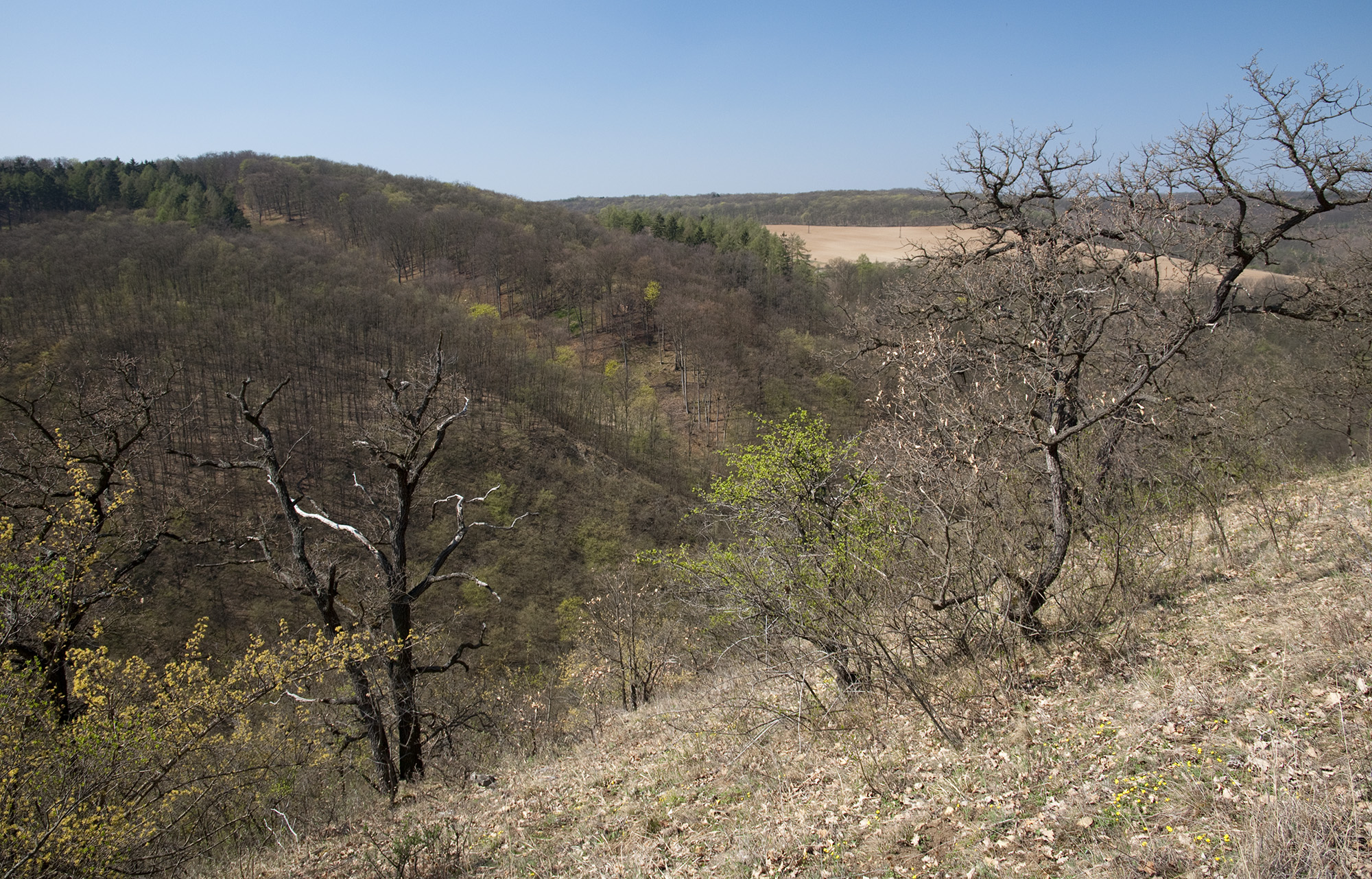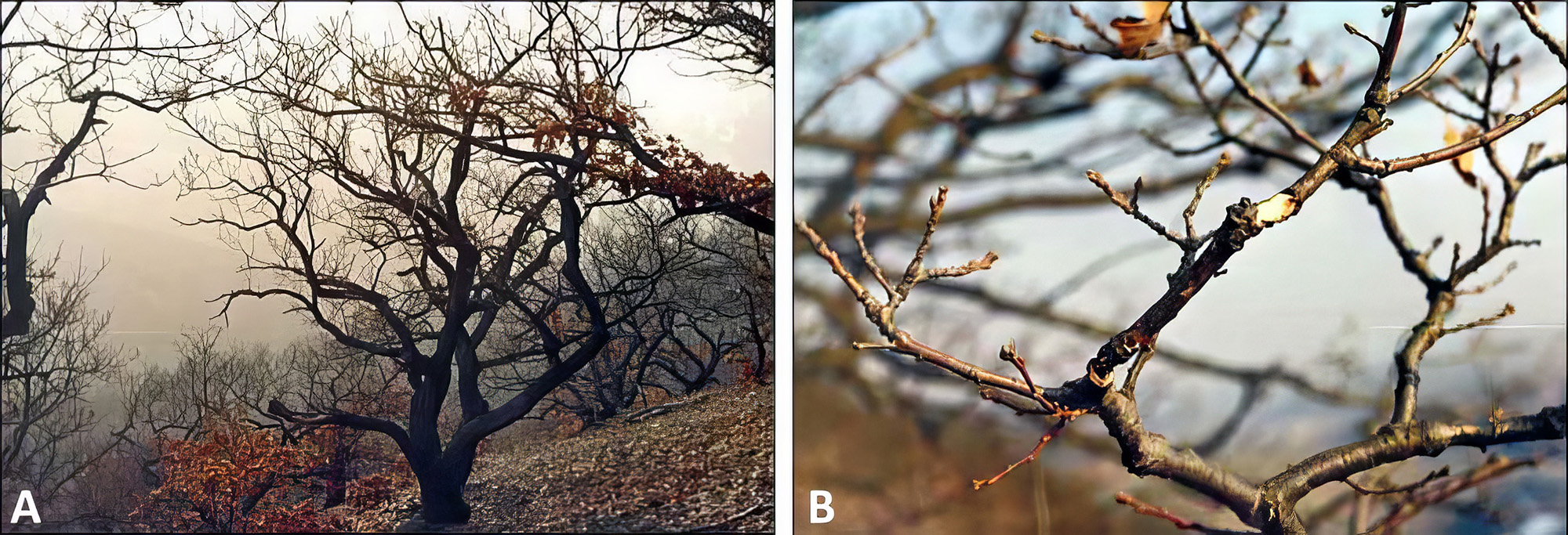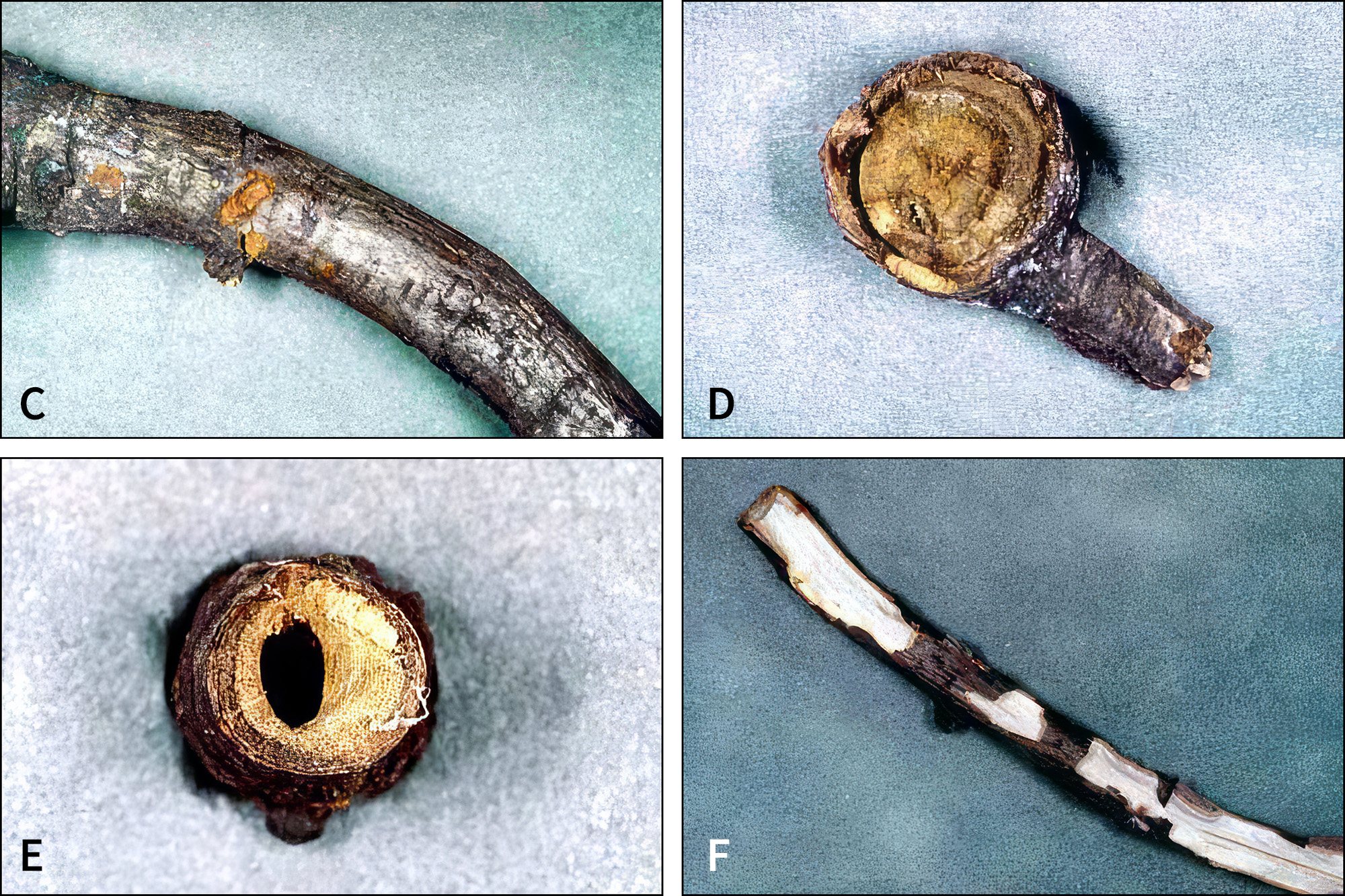biology

[Photo © Michal Hoskovec]
Xerothermic downy oak forest-steppe (order Lathyro versicoloris-Quercetum pubescentis), a typical habitat of Ropalopus varini, located in evirons of Srbsko u Karlštejna village in Bohemian Karst (Beroun district, Central Bohemia, Czechia).

[Photo © Martin Rejzek, Fuji Superia 200 35 mm film scan]
In Central Europe Ropalopus varini primarily occurs in relict oak forests growing on extremely exposed slopes of river valleys (Figure A). The species develops in many Quercus species (Figure B). However, in Central Europe the most frequently recorded host is Quercus petraea, but we reared this species also from larvae found in Quercus robur and Quercus pubescens twigs.
The species oviposits in thin living branches of the host. Newly hatched larvae start to feed subcortically, exclusively on the phloem where they create a very small area within it. In this phloem area, the bark is very thin and regularly perforated with tiny apertures (Figure C). At the end of the first summer the larvae begin to enter the wood. With a sudden turn downwards the larvae enter the xylem and they start to create a tiny helix-like girdle (the first girdle - Figure D). The first girdle completely interrupts the xylem but does not destroy the phloem. After completing the helix the larvae start to mine a subcortical gallery in the twig. The first winter interrupts their activity and the larvae hibernate very close to the first girdle under the bark of the twigs in the subcortical gallery.
In the second year the larvae go on feeding, completely utilising the dying twig, in some cases only leaving the bark and a small part of the grain. In the vicinity of the first girdle the larvae create a small ellipsoid aperture that is used to expel the superfluous frass. The larvae empty the galleries regularly, which ensures them the possibility of free movement. When they reach the top of the twig they turn back and approach the region of the first girdle again. Here, the larvae start to mine in the grain creating an elliptic gallery (Figure E), then pass the region of the first girdle and create a deep pupal cell in the below-girdle portion of the twig. Next, the larvae cut off the part of the twig distal to the pupal cell leaving only a thin layer of the dead bark (second girdle - Figure E). They then enter again into the pupal cell, and secure themselves there with a wad of non-fibrous frass and hibernate.
The second girdle is created regularly in the dead part of the twig approximately 1 cm above the first girdle. During the winter the twig usually breaks in the second girdle (Figure F) leaving a free route for the adult beetle to leave the pupal cell merely by removing the wad of frass. The emerging adults create no additional exit holes. During the next spring the larvae pupate, adults hatch and leave the twigs after two years.

[Photo © Michal Hoskovec, Fuji Superia 400 35 mm film scan]
Vlasák J. and Rejzek M.:
Biology of Ropalopus spinicornis (Abeille de Perrin, 1869) (Coleoptera: Cerambycidae).
Mitteilungen des Internationalen Entomologischen Vereins 23 (1-2): 53-61, 1998. [download]
